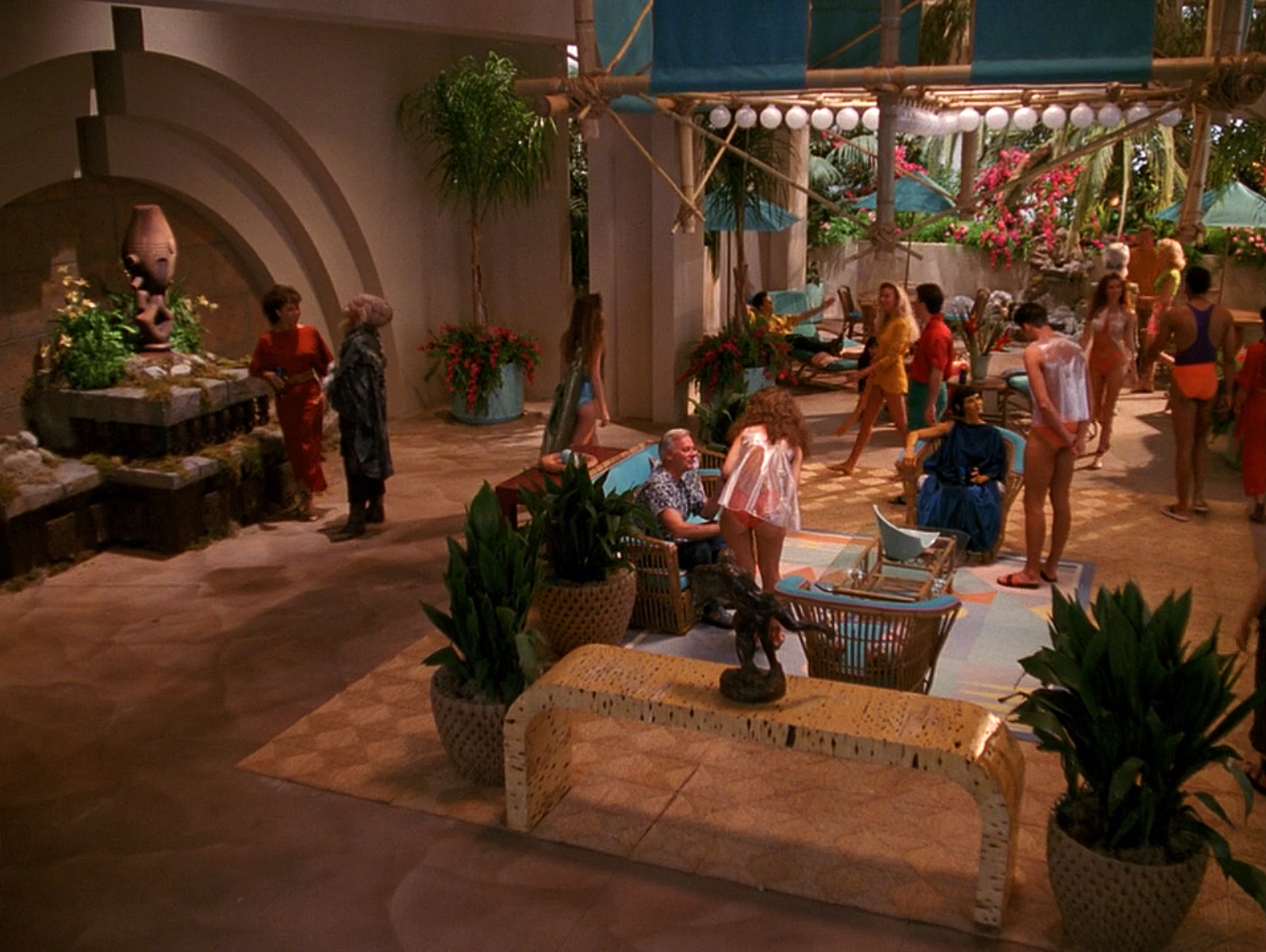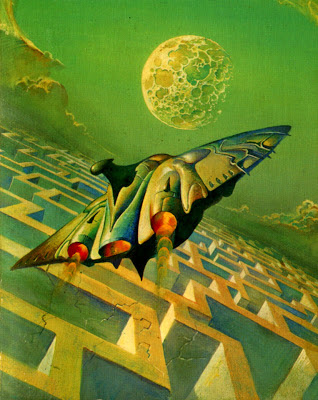Genres run on tropes (or cliches, if you're less charitable).
Planet of Amazons
Whatever strides the future will have made in terms of gender equality, there still always seems to be some place out there with warrior woman who are either hostile to men, find them fascinating and strange, or both. This is perhaps just a variant of the Woman Dominated Planet (where men are present but second class citizens, and the women aren't necessarily a warrior race) with less cool a name.
Examples: Queen of Space (1958), Star Maidens, Buck Rogers "Planet of the Amazon Women," Space: 1999 "Devil's Planet," Omega 3 in Starstruck, the Femizons from Marvel Comics, Lyrane II from Second Stage Lensmen.
Casino World
If your space opera setting doesn't have a world like this, where would Lando Calrissian play sabacc? There are probably very few whole planet casinos, but there might be casino cities surrounded by wastelands or casino space stations--bonus points if it's shaped like some sort of gambling device. There may be some overlap with the Pleasure Planet.
Examples: Buck Rogers "Vegas in Space," Cowboy Bebop "Honky Tonk Women," The Wheel from Marvel's Star Wars comic, Ventura the Gambler's World in the Legion of Superheroes.
Forbidding Planet
Some planets have secrets. Dangerous secrets. These worlds are usually desolate and hard to get to. Those who have sought their secrets before may have died for them--or maybe they've somehow become their guardians. If the secret is particularly dangerous, this might be a Hellworld is disguise.
Examples: Forbidden Planet (1956), Planet of Vampires (1965), Miranda in Serenity (2005), LV-426 in Alien (1976), LV-223 from Prometheus (2015); any number of worlds in the Star Trek series fit the bill, but Talos IV is probably the most archetypal; there are a couple of these in the Deathstalker novels.
Hellworld
Some planets just want you dead. Maybe they've got super-hostile sapient inhabitants, a deadly biosphere, or a poisonous atmosphere, the result is the same. It's going to take something of value to attract PCs to a Hellworld; this may be a natural substance or some person stranded there. As mentioned before, there is some overlap with the Forbidding Planet.
Examples: Aliens (1986), Star Trek "Whom Gods Destroy" and "The Way to Eden," Nu-Earth in Rogue Trooper, Lythyl in Legion of Superheroes, Spatterjay in The Skinner by Neal Asher, and of course Deathworld by Harry Harrison.
Pleasure Planet
Everybody needs a little relaxation and recreation, and a Pleasure Planet is it. This may be a fairly tame resort world, a place of supreme decadence and indulgence, or seedy planet with deadly secrets.
Examples: Doctor Who "The Leisure Hive," Wrigley's Pleasure Planet and Risa from Star Trek, Delirius from Lone Sloane, Raggashoon from Omega Men.
8 hours ago

























